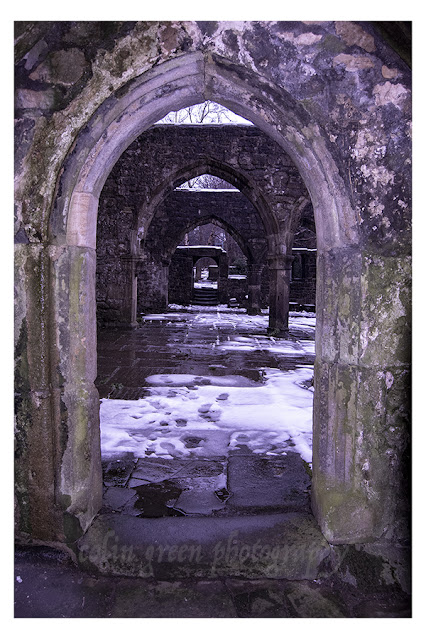The air feels thick with history here, damp and heavy. You can feel it in the air and see it in the rich greens that cling to every surface. I’ve come to explore the ruins of Staups Mill, a place lost to time in the quiet of a West Yorkshire valley.
Staups Mill, originally called Starling Mill, was a cotton mill built in the late 18th century. It relied on the force of Blackshawhead Clough for power, a stream that then marked the border between Lancashire and Yorkshire. It’s now more commonly known as Jumble Hole Clough.
As I walked down the path, the sound of the rushing water was a constant companion. It was this same water that seems to have sealed the mill's fate. On September 24, 1896, a dam collapsed, sending a torrent of water down the clough and severely damaging the mill. The story, for all intents and purposes, ends there. All that remains are the moss-covered stone walls that now stand as a monument to the past.
The ruins themselves are impressive, but they're also a reminder of the wild, untamed nature of this landscape. The landowner has put up signs and planted trees to prevent people from getting too close, a sensible move given the unstable appearance of the remaining structure. While I was careful to respect the boundaries and didn't attempt to get closer, I do wish I could have photographed the mill from the other side, where Jumble Hole Clough flows right up to it.
On my way back, a couple of thoughts struck me. First, why on earth would they have built a mill so far out here? It's a long way from the nearest settlements, making the daily commute and the transport of goods a significant challenge. Second, I couldn't help but think about the mill workers of the 18th and 19th centuries. Heading to and from work in the bleak winter months must have been an incredibly harsh existence.
The beauty of the area now stands in stark contrast to the hardship of that era. The woodland steps, the giant moss-covered boulders, and the stunning bluebells dotting the hillside all create an atmosphere of quiet, natural beauty. It’s a place where history and nature have merged into one, and the past is slowly being reclaimed by the earth.
Clicking any of the images below should open a link in another window to my Colin Green Photography store on Zazzle.
 |
| Jumble Hole Clough flowing past Staups Mill, this was as close as I got to the ruins and due to careful camera cropping it looks a lot closer than it was. |
 |
| I thought this picture had a similar look to the ones of the Amityville House, with the 2 windows like eyes at the top. |
 |
| One of the streams flowing off the surrounding moors and fields into Jumble Hole Clough, at one time this would have been me stood in Lancashire looking across to Yorkshire. |
 |
| The path away from the mill towards Blackshawhead. |
I have recently been made aware that the remains of Staups Mill have been demolished.
Please take a moment to share this post, follow me on social media, and explore my work on Clickasnap and Photo4Me using the links below. Your support means a lot!
All the pictures remain the copyright of Colin Green.








































